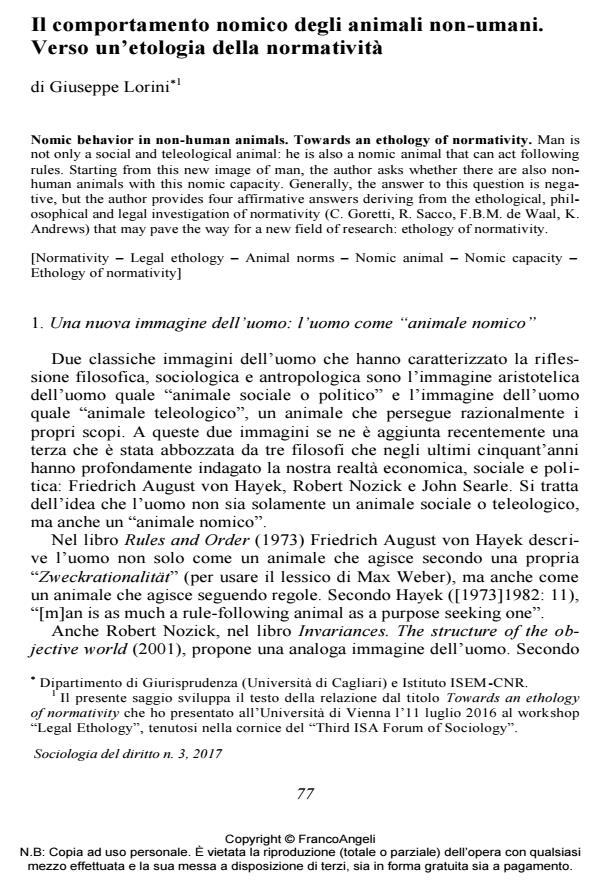Il comportamento nomico degli animali non-umani. Verso un’etologia della normatività
Titolo Rivista SOCIOLOGIA DEL DIRITTO
Autori/Curatori Giuseppe Lorini
Anno di pubblicazione 2017 Fascicolo 2017/3
Lingua Italiano Numero pagine 29 P. 77-105 Dimensione file 383 KB
DOI 10.3280/SD2017-003004
Il DOI è il codice a barre della proprietà intellettuale: per saperne di più
clicca qui
Qui sotto puoi vedere in anteprima la prima pagina di questo articolo.
Se questo articolo ti interessa, lo puoi acquistare (e scaricare in formato pdf) seguendo le facili indicazioni per acquistare il download credit. Acquista Download Credits per scaricare questo Articolo in formato PDF

FrancoAngeli è membro della Publishers International Linking Association, Inc (PILA)associazione indipendente e non profit per facilitare (attraverso i servizi tecnologici implementati da CrossRef.org) l’accesso degli studiosi ai contenuti digitali nelle pubblicazioni professionali e scientifiche
Man is not only a social and teleological animal: he is also a nomic animal that can act following rules. Starting from this new image of man, the author asks whether there are also non-human animals with this nomic capacity. Generally, the answer to this question is negative, but the author provides four affirmative answers deriving from the ethological, philosophical and legal investigation of normativity (C. Goretti, R. Sacco, F.B.M. de Waal, K. Andrews) that may pave the way for a new field of research: ethology of normativity.
Parole chiave:Normativity - Legal ethology - Animal norms - Nomic animal - Nomic capacity - Ethology of normativity
- Tra ottimizzazione della funzione comando e prospettive di un suo superamento Clementina Colucci, (ISBN:979-12-215-0664-8)
- Regolare con artefatti Giuseppe Lorini, Olimpia G. Loddo, Stefano Moroni, in SOCIOLOGIA DEL DIRITTO 1/2022 pp.173
DOI: 10.3280/SD2022-001008
Giuseppe Lorini, Il comportamento nomico degli animali non-umani. Verso un’etologia della normatività in "SOCIOLOGIA DEL DIRITTO " 3/2017, pp 77-105, DOI: 10.3280/SD2017-003004